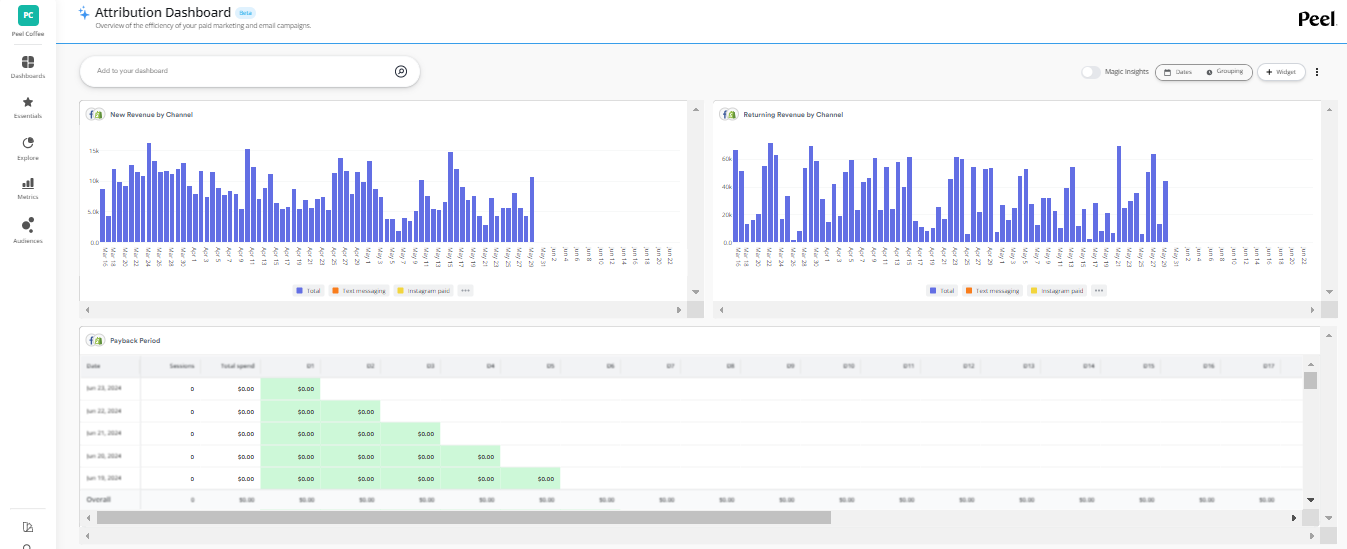Attribution

Attribution data helps brands understand where their customers came from before making a purchase. Knowing where customers are coming from helps you make decisions on where to spend and see what channels are more popular in different stages of the customer journey (new customers vs. returning customers).
Peel collects customer attribution data on every order from Shopify. We are not tracking the attribution or pulling the pixels ourselves. If you are running a headless website from Shopify, none of the data will be tracked by Shopify.
Shopify shares with us what they call CustomerJourney and it details referrals and UTM parameters. We defined our own Channel mapping with 13 platforms so you can get the most accurate tracking of channel performance, without needing to set up the channel mapping yourself as required in Google Analytics or other data platforms.
Attribution in Peel includes:
- The Attribution Dashboard
A central place to look at all of your attribution data - Orders by Channel
The total number of orders placed by customers attributed by each marketing channel. - Payback Period
Compare daily ad spend with the revenue generated and the time lag between the click and the order, from orders attributed to these channels and ads. - Revenue by Channel
The total sales (gross sales - discounts - returns + taxes + shipping charges) attributed by each marketing channel. - New Revenue by Channel
The revenue on first-time orders (gross sales - discounts - returns + taxes + shipping charges) attributed by each marketing channel - Returning Revenue By Channel
The revenue on repeat orders (gross sales - discounts - returns + taxes + shipping charges) attributed by each marketing channel.
Updated 7 months ago